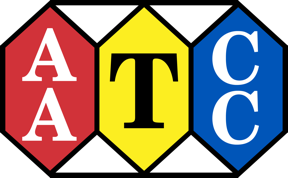Color Acuity
To ensure accurate color assessment, it is vital to thoroughly test visual capabilities. Maintaining color vision expertise is critical to providing reliable, data-driven insights to your customers. Explore tools for color acuity such as the Farnsworth-Munsell 100 Hue Test and the Pseudoisochromatic Plates used for (Color Blindness assessment. Evaluate the impact of lighting on color proficiency with more specialized measurement tools such as a Simultaneous Color Viewer-GTI for side-by-side comparisons, or the Graphic Light Shade Booth to maintain consistent viewing conditions.
Color Fastness
Colorfastness is a critical requirement for most textile products, especially those intended for clothing, recreation, uniforms, and personal protective equipment. Explore fastness evaluations for key features such as perspiration, crocking and water.
Moisture Management and Water Resistance
Many textile products claim repellency or moisture management properties. Put fabrics through Spray and Impact Penetration testing. Examine fabric drying time using the James Heal Pro Dry Tester. Educate yourself on resources to ensure confidence in your performance and compliance claims.
Laundering
Laundering is an important part of the lifecycle for many textile products. Laundering can impact the size, shape, color, and smoothness of textiles. Explore the variables in the laundering process—and how to control them. Get to know the specialized test methods and tools that ensure dependable results and good approval decisions. Plus, find out how AATCC detergents and test methods support your sustainability initiatives.
Dimensional Stability & Appearance Testing
Dimensional stability and appearance of your textile products are important performance characteristics. Check out how to properly evaluate for these features and get acquainted the tools for proper evaluation, including Shrinkage Scales, and Shrinkage and Skew Rulers. Find out the options for properly evaluating smoothness, wrinkles, and creases using LED lighting. By conducting these and other standardized tests, you can confidently verify your textiles exceed customer expectations for dimensional stability and appearance.
Stain Testing
To thoroughly assess the stain and soil resistance of textiles, AATCC offers several test methods. Take the opportunity to review the stain resistance for floor coverings and to Household soils. These assessments demonstrate textiles’ ability to maintain their clean, vibrant appearance even when exposed to real-world stains and soils.
Fiber Fragment
So-called “microfibers” are tiny fragments making big news. These fiber fragments can break off or come loose from textile yarns and fabrics during production, use, and laundering. Fiber fragments find their way to waterways, remote mountaintops, and human tissue. AATCC provided the first textile standard for quantifying this problem as a first step in addressing this in home laundering— AATCC TM212. Come to the Test Zone and get hands-on practice with the l test apparatus for measuring fiber fragment release in laundering.

